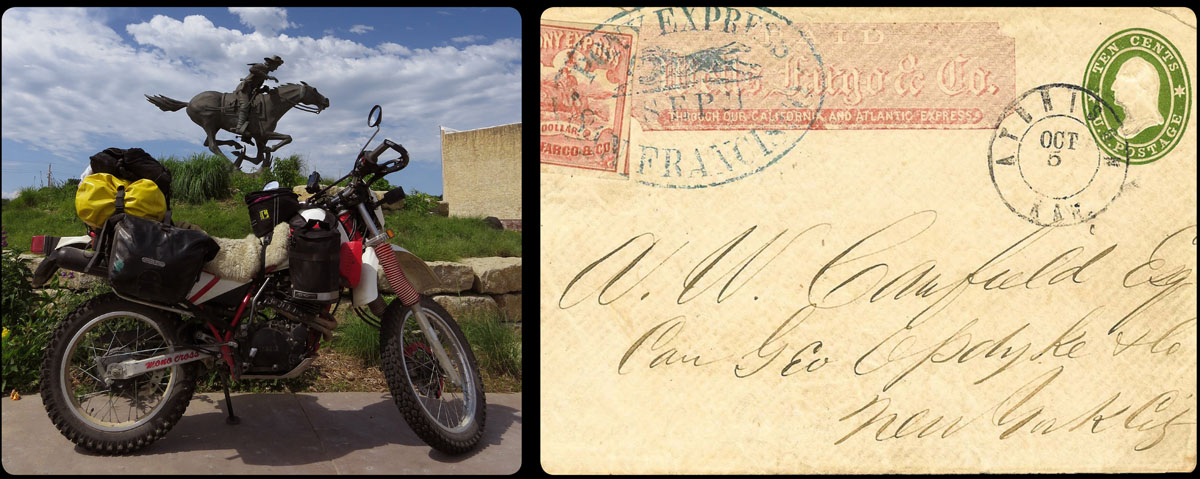‘Are you English? Canadian?’
‘No, Dutch’
‘Oh, I’m sorry!’
‘That’s okay. It’s better than being called German all the time’
‘Well, a lot of people from Marysville originally came from Germany, so we don’t really think it’s such a bad thing’.
Oops.
The person I’m talking to is Jill, caretaker of the Pony Express Station in Marysville, Kansas. This limestone building is the only surviving station of the legendary mail service that operated from 1860 to 1861. It’s a museum now, and this morning I paid it a visit. Fortunately Jill isn’t offended by my thoughtless remark, and I get a very good tour around the museum.
The Pony Express route and the Oregon Trail have a very obvious connection: both ran along the Platte and Sweetwater Rivers.
The service originated in a very strong desire by the people of California for a fast and reliable mail service. Normally the mail would go by steamship, then overland through Panama, and from there again by sea. But this usually took about five long weeks and sometimes the mail wouldn’t even arrive at all.
There had been some experimenting already with an overland mail service: by mule and even by camel, but it took three men to do the job properly in 1860: business partners Russel, Majors and Waddell. They decided to start a mail service by horse that could deliver the mail from St Joseph to San Francisco in just ten days. They did this at their own expense, but hoped that eventually it would lead to a lucrative government assignment that would pay for all their expenses made.
It was no simple thing, to start this whole new enterprise from scratch. Between St. Joseph and San Francisco, a distance of 1,840 miles, there had to be a station every 10-15 miles, where fresh horses would be available for the riders. This was the distance a good horse could run without being exhausted. On level ground the distance between stations would be a little further apart, in the mountains the stations would be closer together.
Only the best horses would be good enough, because only a strong and fast horse would be able to outrun the Indian ponies. For the riders this would often mean the difference between life and death. Eventually a total sum of 87,000 dollars was invested in horses.
The riders had to be light men or boys, not over 120 pounds, and orphans were preferred. They were paid between 100 and 150 dollars a month, a fortune in those days, but for this they had to escape Indians, face wolves and bandits and try to survive snowstorms, thunderstorms, terrible desert heat and swirling rivers.
The mail was transported in a so-called mochila, a sort of leather overjacket that could be thrown over the saddle, so it would be very easy to take from the saddle and put on a fresh horse.
The service turned out to be a great success. Eventually a total of 34,753 pieces of mail were delivered, and not one was ever lost. Despite the huge success, the Pony Express service only lasted about 18 months; from April 1860 to October 1861. Not only were costs to keep the service running too high to be profitable, in 1861 the transcontinental telegraph line was completed, and a fast mail service was no longer needed.

